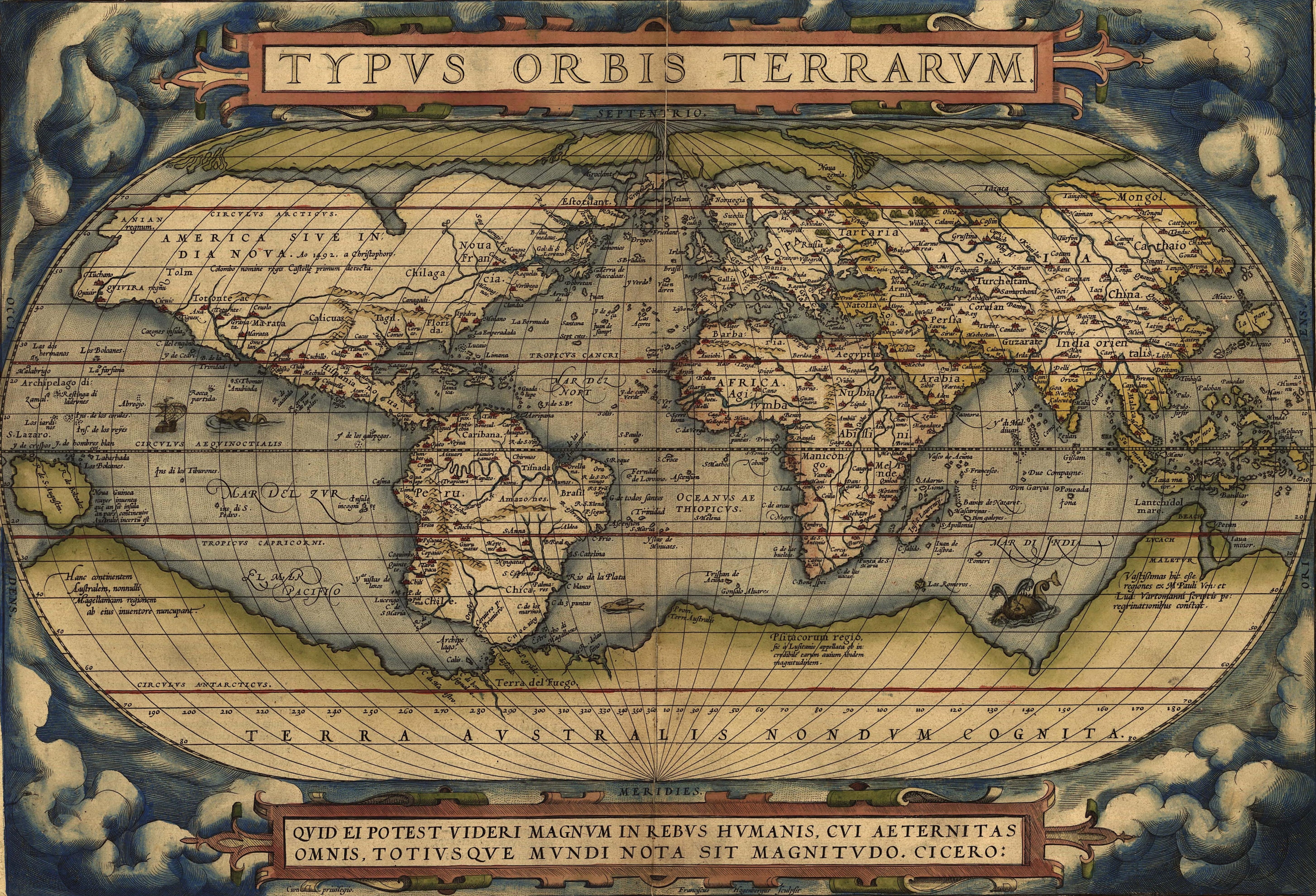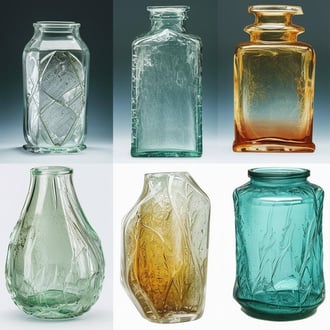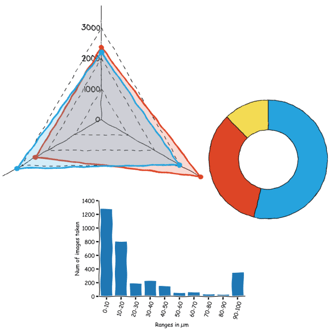Discover the capabilities of WaveMode AFM in characterizing bottlebrush polymers with unprecedented detail and speed, ...

The ultimate tool for nanoscale research from biological molecules to advanced new materials.
The versatile mid-range research AFM that grows with your demands in modes and accessories.
A compact affordable research AFM that is astoundingly easy to use, with more than 30 modes and options.
Fastest reliable sub-Angstrom surface roughness metrology.
Bringing the power of DriveAFM to a wafer metrology system purpose-built for the requirements of the semiconductor industry.
Measure roughness and other material properties of heavy and large samples up to 300 mm and 45 kg.
For unique requirements, we will design a bespoke AFM solution, leveraging our decades of engineering expertise.
Slide an AFM onto your upright optical microscope turret for a leap in resolution.
One of the smallest ever AFMs, created for integration into custom stages or existing setups.
A flexibly mountable research-grade scan head for integration into custom stages or existing set ups.
What is atomic force microscopy (AFM)? How does AFM work? What AFM modes do I really need? How do I get started with AFM?
Learn how AFM works with cantilever/tip assembly interacting with the sample. Explore CleanDrive technology, calibration methods, and feedback principles for precise nanoscale imaging.
An overview of common AFM modes. To learn about each mode in more detail and see application, view the full article.
We regularly publish detailed reviews providing practical guidance and theoretical background on various AFM applications.
Read detailed technical descriptions about selected AFM techniques and learn how to perform specific measurements on Nanosurf instruments.
A library of links to research papers in which Nanosurf instruments were used.
Learn AFM from our library of recorded webinars, covering different measurement techniques, modes, and areas of application.
Short video clips explaining how to perform different operations on Nanosurf instruments.
Watch a product demonstration to learn about the capabilities of our AFMs.
Short videos of our AFMs.
Browse news articles, press releases and a variety of other articles all around Nanosurf
Browse Héctor Corte-Léon's weekly experiments, for inspiration, entertainment, and to discover everyday applications of AFM.

Héctor here, your AFM expert at Nanosurf calling out for people to share their Friday afternoon experiments. Today I'll show you how to combine AFM with astrogeology (again).
We are in the year 1576, in South America, almost 450 years ago. Less than 100 years since Cristobal Colon arrived to the Americas in 1492, and less than 60 years since Fernão de Magalhães, in 1519, using three months to cross from Spain to south America, circumnavigates the world. It is a time when there is almost no industry yet in that part of the world, most of the metal tools are made out of recycled metal from materials brought from Europe. Remember that the first modern Atlas wus just published by Abrahm Ortelius in 1570.

It is in this mythical time that a legend spread in northern Argentina about natives making their tools from a metallic rock fallen from the sky. The natives claimed that the mass had fallen from the sky in a place they called Piguem Nonralta, which the Spanish translated as Campo del Cielo ("Field of heaven (or the sky)"). Hearing that legend, the governor of the region commissioned a military expedition to search for the iron deposit in order to seize it and provide supplies for the region. The expedition found a large mass of metal protruding out of the soil and collected a few samples, which were described as being of unusual purity. The governor documented the expedition and submitted the report to the General Archive of the Indies in Seville, Spain, but it was quickly forgotten and later reports merely repeated the native legends.
We have to skip forward almost 200 years, to 1772 (and later in 1783) for other expeditions to be sent in search of the mythical place. In this occasion, samples were retrieved and sent to the Royal Society in London which determined it was of meteoritic origin, and its composition was mainly Iron and Nickel. Reveling later studies that on average the composition of the Campo del Cielo meteorites are:
Those studies also found up to 26 craters, all belonging to a main body of about 4 m in diameter with a mass in between 122 (extracted mass) and 264 (Iron sphere of 4 m in diameter) tonnes. The age and history of the meteorite was also obtained, results indicating that it fell to Earth in 2,200–2,700 BC and it was formed 4.5 billion years old (that is 4.5 109 years) as part of the development of our solar system.
So what I'm going to show you here today is a glimpse of the formation of our solar system, something that fell to earth when the Pyramids were being built (go check it out when the Giza's pyramids were built, I'll wait), that was part of legends (probably considered a gift from the sky), and that ended in my hands thanks to a nice deal in Etsy.
Say hello to Campo del Cielo meteorite.
Literally a chunk of Fe. On one side this is nice, because it means it is conductive (I tested with a multimeter, so if there is an oxide layer is thin enough to pierce it with the probes of the multimeter), on the other side, it means it is going to fell the pull from the variable magnetic field system and is going to move.
With the sample attached with the clock-makers putty, as we learn with in the Final Frontier - fridayAFM, I proceeded to do some AFM imaging. In this case finding a suitable area was easy, as it is large and there are plenty of flat areas, nevertheless, it has a concave shape and more than once I bumped onto the meteorite with the AFM probe holder.
The first thing I noticed is the striking resemblance with other metallic samples I imaged in the past, for instance, remember the fridayAFM about cleaning coins? Can metal polish chemical beat dishwasher? If I was only shown the AFM topography, I will have a harsh time trying to say which is which. However, there is even more resemblance with an even older fridayAFM. Remember about one year ago when Nanosurf celebrated its 25 anniversary? For the occasion I performed MFM on the swiss army knife we made for the celebration (you can see the figure I made below). The resemblance between the steel of the blade and the meteorite is uncanny. To the point that the MFM is very similar, however, in the blade the domains are smaller and the magnetic texture is more homogeneous. The smaller domains are likely to the higher Chromium content in the blade (Chromium increases the magnetic moment, thus making domains smaller, take it as a rule of thumb, not as a fact, many things affect the final behaviour). The large structures highlighted in red, are likely to grains with different composition or crystallographic orientation. This information is relevant because it tells informationa bout the thermal treatment this sample went through (see Ref 1).
What else can we learn? The next thing I tried was varying the applied magnetic field. This was difficult because the mass of iron was moving with large fields, so I couldn't reach the coercive field and see domains changing, but I did manage to observe some variations.
I saw some areas (in red), showing almost a mono-domain behaviour and some changes in magnetic texture with the field. According to the literature (see Ref 2), in these samples the clusters with higher O concentration are common. These spots are likely of Iron Oxide with different oxidation number than the rest of the sample, thus why the different magnetization.
Since different oxidation number is usually associated with changes in conductivity, the next thing that I tried was doing some scanning microwave microscopy (SMM), because it can tell us differences in conductivity. However, since the sample moved in when I sweep the magnetic field, I couldn't image on the same area as before, so I had to start over, doing SMM first.
As you can see from the SMM below, there are bright spots indeed, indicating different conductivity (lower in this case). To make sure there is no cross-talk from the topography (in this case variations in the microwave coupling due to geometrical features), I marked in green the two cases where there is almost no topographical features.
In order to discard the presence of contaminants (e.g. grease from the hands of the people that handed these samples), which might also have lower conductivity, I performed some nanomechanical measurements with Wavemode. The fact that these areas didn't semar when imaging in Static mode during SMM is probably proof enough, but nevertheless, better to have a second opinion.
As you can see from the images above, this part of the sample is quite homogeneous in terms of stiffness and adhesion, meaning that either there is no contamination, or is evenly distributed. In other words, the change in conductivity is due to something on the meteorite and not contamination. Most likely part of the meteorite is magnetite and the other hematite, because they have similar magnetic properties but different electrical conductivity (see Ref 3).
To test this I did some MFM again, this time on the same area, and as you can see below, there is no different magnetic texture over the clusters, indicating that they have similar magnetic properties than the material around them
Let's recap. We found that this meteorite has a quite uniform magnetization (as opposed to the previous fridayAFM were there was clusters with high magnetic moment). By looking at the evolution of the magnetization we identified some clusters with different properties. This prompted performing some microwave microscopy, which identify clusters with low conductivity. After ruling out contamination, it was found that these clusters have the same magnetic properties as their surroundings. Thus there are at least two types of clusters present, and all of them are likely to be Iron Oxide with different oxidation number. Not sure what this information tells us about the history of this meteorite, but maybe people more knowledgeable than myself will see this and can provide us with an answer. Meanwhile, I hope you find it useful, entertaining, and try it yourselves. Please let me know if you use some of this, and as usual, if you have suggestions or requests, don't hesitate to contact me.
Study of Magnetization in Artificial Spin Ice at Variable Magnetic Fields
Magnetization of electrical steel in external magnetic fields
Scanning Microwave Microscopy (SMM)
Studies of MC2 capacitance standard sample by scanning microwave microscopy (SMM)
Off-resonance Tapping Mode (ORT) - WaveMode
Further reading:
[1] Scheiblechner, W., Schubert, W. D., Strobl, S. and Haubner, R.. "A heavenly sword – forging a Campo del Cielo meteorite" Practical Metallography, vol. 59, no. 8-9, 2022, pp. 445-458. https://doi.org/10.1515/pm-2022-1016
[2] Kevin Kaufmann, Chaoyi Zhu, Alexander S Rosengarten, Daniel Maryanovsky, Haoren Wang, Kenneth S Vecchio, Phase Mapping in EBSD Using Convolutional Neural Networks, Microscopy and Microanalysis, Volume 26, Issue 3, 1 June 2020, Pages 458–468, https://doi.org/10.1017/S1431927620001488
[3] Lertcumfu, N., Sayed, F.N., Shirodkar, S.N., Radhakrishnana, S., Mishra, A., Rujijanagul, G., Singh, A.K., Yakobson, B.I., Tiwary, C.S. and Ajayan, P.M. (2019), Structure-Dependent Electrical and Magnetic Properties of Iron Oxide Composites. Phys. Status Solidi A, 216: 1801004. https://doi.org/10.1002/pssa.201801004

28.10.2025
Discover the capabilities of WaveMode AFM in characterizing bottlebrush polymers with unprecedented detail and speed, ...

27.10.2025
Read this blog and discover advanced alloy engineering and cutting-edge AFM techniques for high-resolution, ...

14.10.2025
Discover how WaveMode technology resolves the tobacco mosaic virus structure under physiological conditions with ...

08.12.2024
Learn how to make a Python code to interface your AFM with a gamepad.

01.10.2024
FridayAFM: learn how the extreme sensitivity of AFM can reveal the glass ageing process.

11.07.2024
FridayAFM: learn how to perform datamining on large sets of AFM data.
Interested in learning more? If you have any questions, please reach out to us, and speak to an AFM expert.
